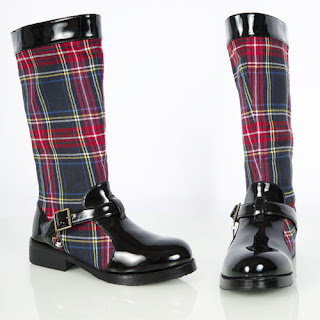 Gwen Stefani, lead singer of the pop band No Doubt, has lead a Madonna-esque fashion revolt in both her recent videoclip for her single What You Waiting For and her solo album Love, Angel, Music, Baby. Her catchy 80's inspired popish tunes, platinum blonde hair and Like A Virgin kit out on the album cover art only reinforce her homage to the material girl, even though it may be somewhat tongue in cheek.
Gwen Stefani, lead singer of the pop band No Doubt, has lead a Madonna-esque fashion revolt in both her recent videoclip for her single What You Waiting For and her solo album Love, Angel, Music, Baby. Her catchy 80's inspired popish tunes, platinum blonde hair and Like A Virgin kit out on the album cover art only reinforce her homage to the material girl, even though it may be somewhat tongue in cheek.But its her references to the Japanese Harajuku Girls peppered throughout the album and on one track in particular that has drawn interest from a diverse range of commentators.
So who are these Harajuku Girls anyway?
The Harajuku District of Tokyo and in particular Takeshita Street, a narrow street lined with shops is home to these funky fashionistas. Since the end of World War II, "consumerism" and "consumption" have become the national past-time for most Japanese and in particular teenage girls who often live at home with their parents well into their twenties. Their rent free existence provides them with the enough funds to flock to Harajuku every weekend, where they transform themselves into Lolita-esque baby doll caracitures.
It's all a sort of a pop-art meets pop-culture meets Western decadence kinda street where often a t-shirt with a western image like Mickey Mouse can go for several hundred dollars a pop. This constant pursuit of rock n roll pop star hipness extends to teenage boys too. They in turn have opted for the western inspired hip-hop culture of disheveled jeans hanging half way to their knees, caps at all angles on their heads and of course lots and lots of bling.
Often the net result looks like something out of a Manga comic book as the fashionistas of Harajuku compete to look less human and more iconic. Not concerned about what we in the West may see as a conflict of style over substance, Harajuku Girls unlike the Goths, punks and bond girls that came before are not about rebellion from society. No, in fact these girls, like most Japanese, are often extremely polite and happy to pose for photographs with inquisitive tourists who gather every Sunday to take happy snaps of these super-model caricatures.
For the Girls of Harajuku, their most extreme vice may be a simple cigarette.
Peter Shuttlewood is the author of webzine freshread [http://www.freshread.com] which contains articles on Popular Culture with an Australian slant. Freshread [http://www.freshread.com] - the everyday in a fresh way.
Article Source: http://EzineArticles.com/?expert=Peter_Shuttlewood









